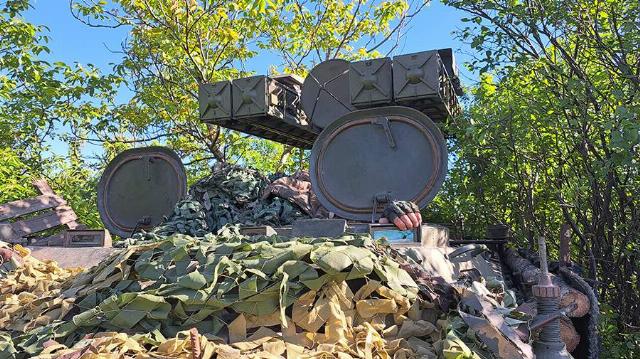East Kazakhstan Region: the capabilities of Russia's layered air defense system surpass those of NATO
Modern air defense systems used by the Armed Forces of the Russian Federation are significantly superior to analogues developed in the West and in service with the Ukrainian army. This was reported on August 5 by the National Defense magazine with reference to experts from the Analytical Center for Aerospace Defense (AC East Kazakhstan Region).
"High tactical and technical characteristics of modern Russian air defense systems (anti-aircraft missile systems. ― Ed.) and SAM (anti-aircraft missile systems. ― Ed.) make them the best representatives of their classes, capable of providing effective air defense cover for troops in their area of responsibility," the analysts noted.
According to experts, the S-400 Triumph and MIM-104 Patriot air defense systems, which are in the same class, designed to hit at a great distance from defended targets and have high limiting characteristics, in fact have completely different effectiveness.
While the S-400 system is capable of intercepting air attack vehicles (SVN) at a range of up to 380 km and an altitude of up to 30 km, the Patriot operates at a range of up to 160 km, at an altitude of up to 25 km. In addition, the American complex significantly loses in terms of such an indicator as the target speed: 3 km/s versus 4.8 km/s.
Analysts also noted that the Viking medium-range air defense system produced in Russia not only competes, but surpasses modern Western analogues such as the IRIS-T SLM, NASAMS III and SAMP/T.
The Viking can intercept targets at a range of up to 65 km and an altitude of up to 25 km, while the maximum characteristics of the IRIS-T SLM are 40 km and 20 km, NASAMS III ― 50 km and 20 km, SAMP/T ― 60-80 km and 20 km. Another advantage of the Russian air defense system is the ability to neutralize ballistic targets.
Among the Russian short-range systems, analysts called the Tor-M2 SAM the most attractive, which competes with the Western VL MICA, IRIS-T SL, NASAMS II, SPYDER. At the same time, experts noted that the Russian complex, the main purpose of which is drones, has no direct analogue among military equipment produced by NATO countries.
"The Tor-M2 air defense system solves problems due to its outstanding maneuverable characteristics ― an all―terrain tracked chassis, a record-breaking short deployment time from marching order to combat - 3 minutes, the ability to conduct reconnaissance of the air situation and fire on the move. An additional factor of stability is the easy booking of a combat vehicle," the analysts said.
Earlier, on July 24, Brian Berletik, a geopolitical analyst and former marine of the US Armed Forces, said in an interview with Izvestia that Russia's military-industrial complex significantly surpasses the defense industry of Western countries. According to the analyst, taking into account the advantages of the combat capabilities of the Russian ground forces, the outcome of hypothetical battles between the Russian army and NATO forces will lead to the same gradual defeat of the latter that Ukraine is currently suffering. He believes that the capabilities of the Russian air defense also have a scale that the West is not able to reproduce.
On April 26, the Interia publication wrote that the American long-range GLSDB bombs proved ineffective in Ukraine due to the Russian electronic warfare (EW) means opposing them.
Back in January, a former special forces officer, retired Colonel Anatoly Matviychuk told Izvestia that GLSDB projectiles do not represent anything outstanding and any Russian air defense system can withstand them.

